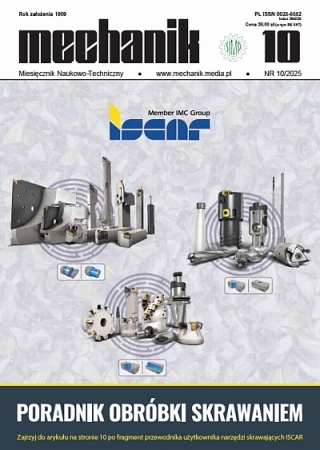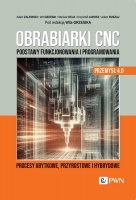Inżynieria odwrotna i szybkie prototypowanie w wytwarzaniu indywidualnych ortez
Patient specific orthoses using Reverse Engineering and Rapid Protytyping
Mechanik nr 12/2015 - Wersje autorskie artykułów z I Krajowej Konferencji Naukowej "Szybkie prototypowanie Modelowanie – Wytwarzanie – Pomiary" zamieszczone na płycie CD
STRESZCZENIE: Współczesne urządzenia protetyczne projektowane są w taki sposób, aby w szeregu kilku typów rozmiarów były dopasowane do wszystkich możliwych pacjentów, a tym samym niestety nie zapewniają odpowiedniego indywidualnego komfortu i funkcjonalności. Dzięki wykorzystaniu metod inżynierii odwrotnej i szybkiego prototypowania możliwe jest aby poszczególne ortezy dostosować do indywidualnego pacjenta i jego choroby, zapewniając jednocześnie odpowiednie nowoczesne wzornictwo. Współczesne skomputeryzowane techniki wytwarzania ortez dla indywidualnego pacjenta mogą zapewnić odpowiedni komfort użytkowania jak również pozwolić na zmianę wzornictwa dla każdego pacjenta sposobnie do jego wymagań.
W artykule przedstawiono kluczowe punkty i narzędzia softwarowe w procesie projektowania indywidualnych ortez przy wykorzystaniu specyficznych technologii, takich jak skanowanie 3D, inżynieria odwrotna i drukowanie 3D.
SŁOWA KLUCZOWE: inżynieria odwrotna, szybkie prototypowanie, ortezy.
ABSTRACT: Orthotic devices are currently designed to fit a range of patients and therefore they do not provide individualized comfort and function. Using RP methods it is possible to make individual orthosis devices tailored to the individual patient and the disease also characterized by the modern design. A computerized technique for fabricating patientspecific orthotic devices has the potential to provide excellent comfort and allow for changes in the standard design to meet the specific needs of each patient. Reverse engineering methods are combined with rapid prototyping to create patient-specific orthoses. A novel process was engineered to utilize patient-specific surface data of the patient anatomy as a digital input, manipulate the surface data to an optimal form using CAD software, processing also for modern looking and check strength and then processing in rapid prototyping machine for fabrication.
The article describes the utilization of rapid prototyping (RP), 3D scanning and software tools for the orthosis design process. This study shows the key points of the design and manufacturing methodology. The approach uses specific technologies, such as 3D digitizing, reverse engineering and polygonal-surface software, SLS RP and 3D printing.
KEYWORDS: Reverse Engineering, Rapid prototyping, orthoses.
BIBLIOGRAFIA / BIBLIOGRAPHY:
- Pham D.T., Hieu L. C. , Reverse Engineering Application and Methods. In: Reverse Engineering: An Industrial Perspective by Vinesh Raja. Springer-Verlag, London Ltd
- Tadeusiewicz R., Śmietański J., Pozyskiwanie obrazów medycznych oraz ich przetwarzanie, analiza, automatyczne rozpoznawanie i diagnostyczna interpretacja. Wydawnictwo – Drukarnia Ekodruk S.C. 2011
- DICOM standard: http://medical.nema.org
- Toshew Y.E., Hieu L.C., Stefanova L.P., Tosheva E.Y., Zlatov N.B., Dimov St., Reverse Engineering and Rapid Prototyping for New Orthotic Devices. Intelligent Producion Machines and Systems. Elsevier 2005.
- Khabazi Z., Generative Algorithms with Grasshopper version 2.0 http://www.grasshopper3d.com/page/tutorials-1
- Tedeschi A., AAD- Algorithms-Aided Design. Parametric Strategies Using Grasshopper. Le Penseur Publisher, 2014


























